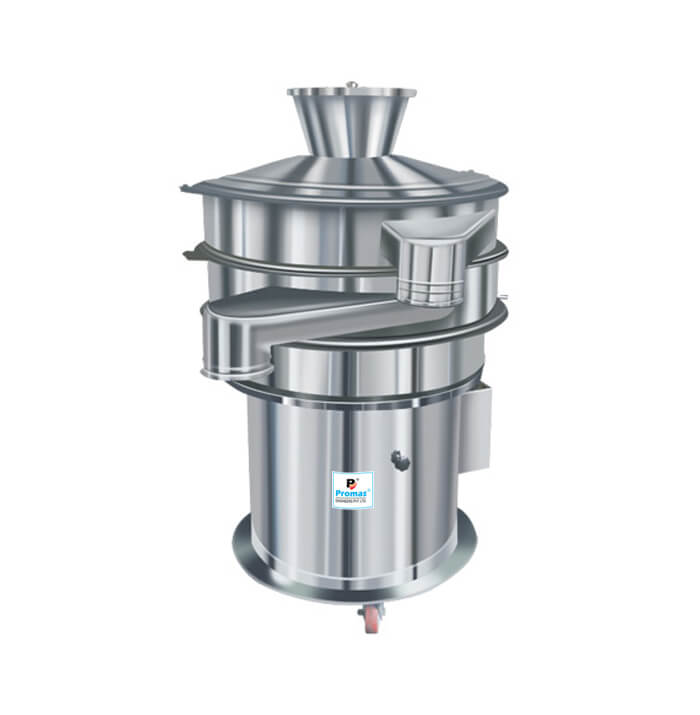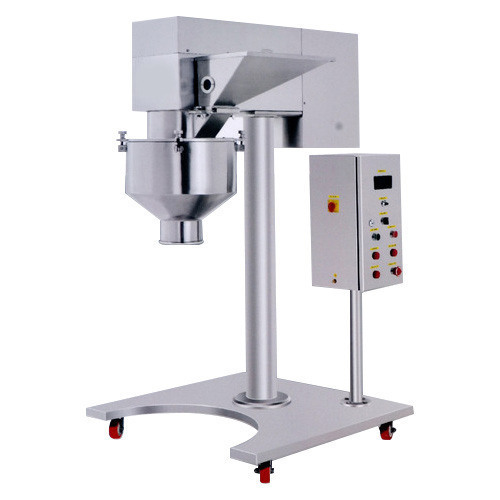A Vibro sifter is a necessary tool for grading materials in a variety of laboratory and industrial procedures. It aids in the separation of materials according to particle size. Circular unitary gyratory screens, also known as vibrating sifters, vibro sieves, control sieves, or check screens, are ideal.
They come in a variety of configurations, designs, and functionalities. Depending on the manufacturer and the intended purpose, this could vary significantly. In the pharmaceutical and food processing industries, a Vibro sifter is not a new piece of equipment.
Types/ Classifications of Vibro sifters
There are a number of important factors to consider when classifying Vibro sifter machines. Design, application, production capacity, model, and brand are just a few examples. Because these features differ so widely, covering each one in this section may not be feasible. In the next sections, you’ll discover more about a few of them.
Let’s go over the most popular classification criteria now:
Classifications based on size
These machines are available in a variety of sizes and styles. Obviously, the production capacity of a machine is determined by its size. But, how can you obtain this knowledge more quickly?
You should go over the sieve requirements again. The diameter of the sieve can range from 12 to 72 inches.
Overall design
As previously said, the Vibro sifter maker will determine the design. An L-shaped sieve frame, for example, could be found on a piece of equipment. It may also have a completely detachable design. Of course, all of this ensures that the equipment is one-of-a-kind, efficient, and simple to operate.
Number of Sieves
The equipment may be a single-layer, double-layer, or triple-layer machine, depending on the intended application. All of this is contingent on the degree of product separation for which the equipment is intended.
Specific application of the equipment
This equipment can be used in both industrial and scientific settings. So, what makes this distinction? The size of Vibro sifters developed for industrial purposes is quite considerable. They’re high-volume machines. Those meant for laboratory use, on the other hand, are quite modest. They’re frequently employed in R&D and sample preparation.
Working principle of Vibro sifter Machine
Although a Vibro sifter is a simple machine, its building and operation might be difficult for most people.
Before we go over the Vibro sifter machine’s operation, let’s go over some of its most important components:
High-quality springs
The major function of these springs is to:
- Allow the machine’s complete upper half to vibrate freely.
- It aids in reducing electricity consumption.
- Acts as a damper, preventing vibrations from being transmitted to the floor.
Apart from the springs, we have the following:
Vibratory electric motor
It is this motor that creates the multi-plane vibratory motion. Remember that this action accelerates the passage of the material through the sieves.
This equipment includes an out-of-balance weight arrangement to do this.
Screen Structures
The sieves are installed in this area. These sieves are used to sort materials based on their size and form. The screens are held taut, making it easier for the material to move in the vibration’s direction. This could be done either horizontally or vertically. Depending on the type of material you want to treat, you can fine-tune the screen motion to meet the performance requirements.
That is, a single machine may separate materials aggressively and gently. To prevent cross-contamination of items in different sieves, the screen structure incorporates FDA-approved seals.
Casing / Outer Structure
Stainless steel is used to construct the construction. It reduces the size and fineness of the product to be processed.
The framework incorporates nylon casters for convenient mobility.
Hopper lid
It restricts the material, preventing dust from entering the machine and the surrounding environment.
How a vibrating sifter machine works
- Fill the hopper with the material you want to separate (the small hole at the top of the vibrating separator).
- Using the clamping rings, secure the cover, screen structure, and base frame tightly.
- Connect the machine to the mains and turn it on.
- Due to the out-of-balance weight assembly, the vibrating motor will be energized, creating a vibratory motion.
- The vibrating screen/sieve will start. Depending on the particle size, material fed into the hopper will pass through sieves.
- The material follows a predetermined path and departs the system via the discharge mechanism.
- The vibrating sifter can be used for a variety of tasks, depending on its design:
- Particle classification in the situation of multi-deck
- In the case of a single deck, scaling or filtering is used.
As you can see, the concept of operation of a vibrating separator is straightforward. Of course, each machine comes with an easy-to-follow handbook or guide. Keep in mind that while purchasing this equipment, you should choose one that ensures a high-quality manufacturing procedure. Promas Engineers is the best Vibro sifter manufacturer and supplier in India, for more information contact us.



